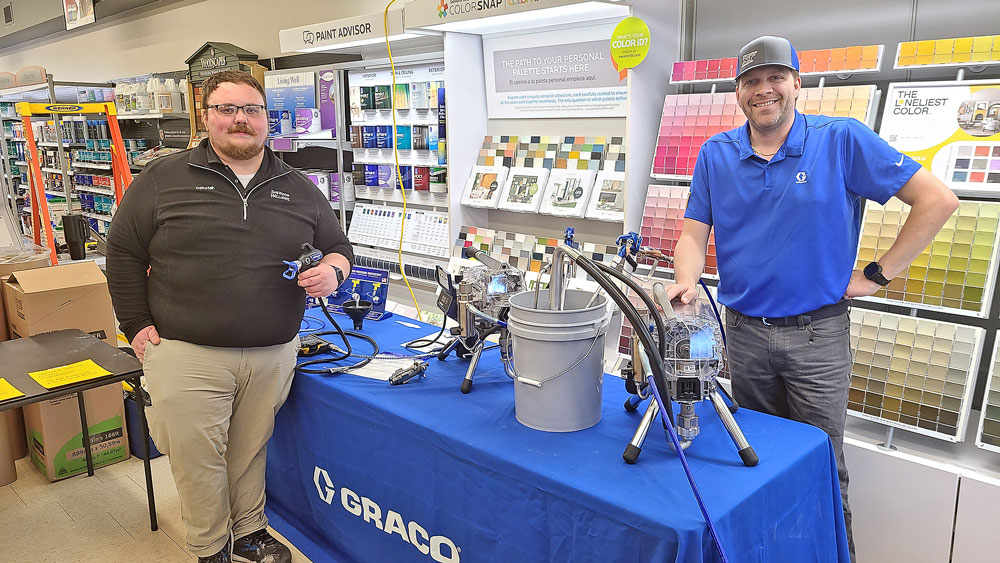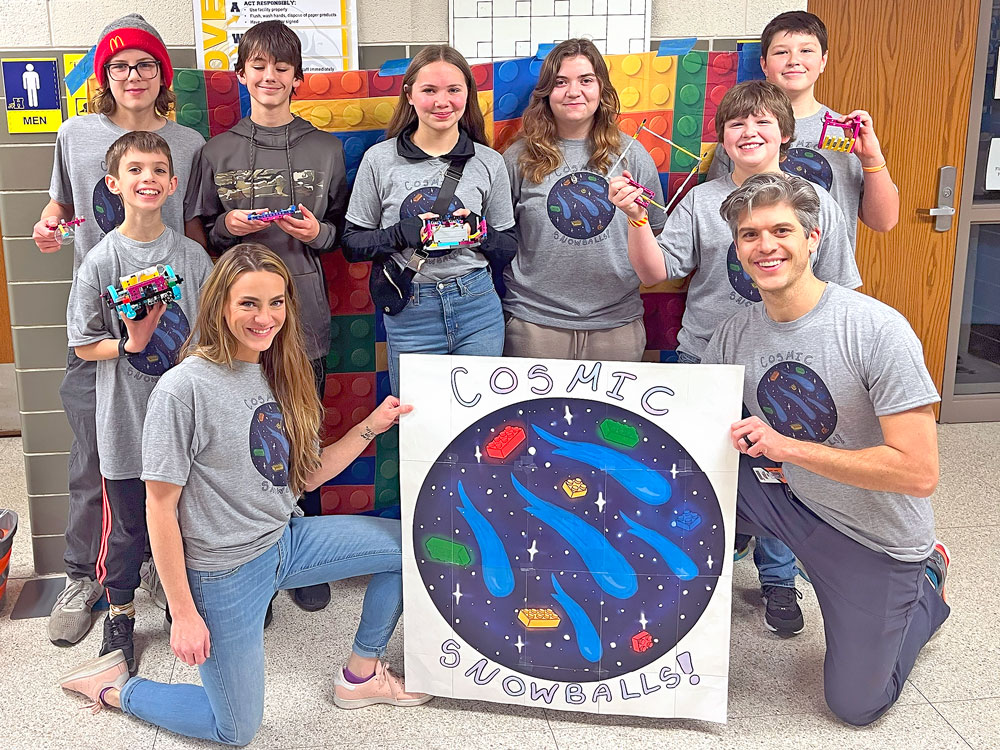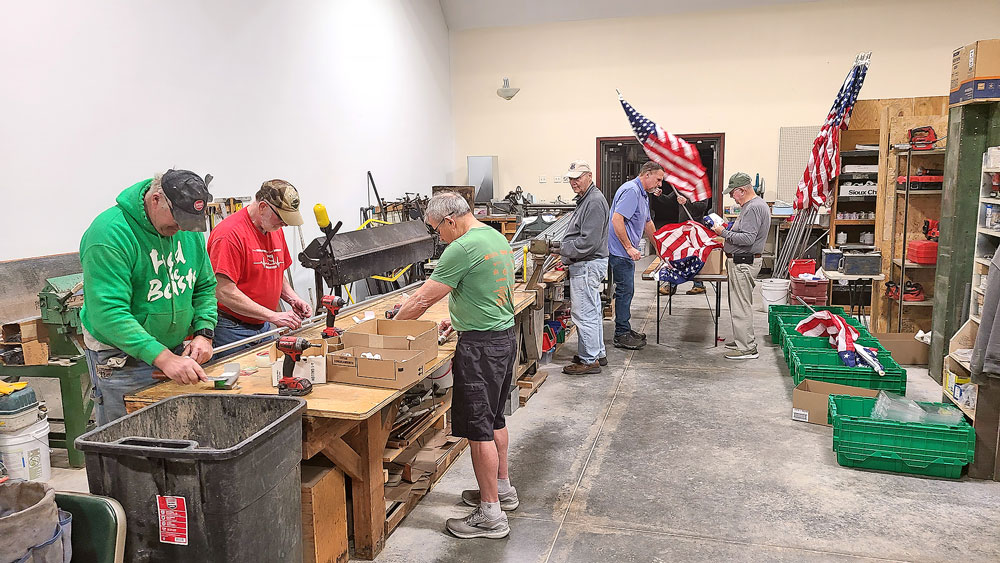A north Iowa watershed is central in state nutrient reduction study

By Kate Hayden, khayden@charlescitypress.com
A crowd of 34 local landowners seated themselves in a spacious shed just north of Floyd to learn about cover crops on Thursday.
Last year, they heard, Iowa had approximately 600,000 acres of cover crops — and the state needs anywhere between 12 million to 14 million acres to practice cover crops.
It’s a good start, researchers said, but Iowa has a long way to go before it reaches Nutrient Reduction Strategy goals.
The purpose of the program is to reduce nutrients such as nitrogen and phosphorus from reaching surface waters in the state, and from flowing down the Mississippi to the Gulf of Mexico. The nutrients can result in algae growth that kills off other aquatic life.
“We’re going to need all available practices to reach our nutrient reduction goals, and that’s going to include nitrogen management, cover crops and edge-of-field practices such as wetlands and bioreactors,” Matt Helmers told the Press.
Helmers, an Iowa State University professor in the department of agriculture and biosystems engineering, was one of three Iowa Learning Farms team members walking producers through the ins and outs of successful cover crop implementation.
Iowa Learning Farms puts on 20-30 similar field days across the state to talk about nutrient reduction strategies for landowners.
The event was an education opportunity for landowners who haven’t yet gotten involved in practices like cover crops, but the day’s hosts have already played a big role in how Iowa Learning Farms will study nutrient reduction in the next three years.
Thursday was the first field day Iowa Learning Farms has had with the Conservation Learning Lab project, program director Jacqueline Comito said.
“There is a CREP wetland at the base of the watershed this area is in, and we have tried to get as high of an implementation of cover crops in the watershed — so we can measure the impact it’s having in the water before it goes into the CREP wetlands,” Comito said.
“This is something that (Iowa) Secretary (of Agriculture Bill) Northey knows about — this is a project that’s being watched.”
The Floyd County site has been collecting water monitoring data for four years now. Researchers will monitor a nearby CREP wetland site as a study control and compare differences between the two sites.
“We will keep monitoring it, and now we’ll be able to know what’s the impact of changing your land management practices — particularly, putting these cover crops out there,” Comito said. “Will it reduce the nitrates and phosphorus before it even gets to the CREP wetland?”
Thursday’s event was hosted by brothers and farmers Ben and Andy Johnson, who, with their parents, own about 55 percent of the farmland surrounding the Conservation Learning Lab watershed.
Researchers are working with five of seven landowners who manage the 540 acres surrounding the watershed. Some landowners are also implementing strip tillage practices in their fields, and dedicated land near the wetland to the Conservation Reserve Program.
Iowa Learning Farms worked with landowners and the local Natural Resources Conservation Service (NRCS) office to develop their practice plans, event coordinator Liz Juchems said.
“The Johnsons, Ben and Andy, together have covered more than 50 percent of the watershed with cover crops. We’ve got roughly, between 60-70 percent of the watershed covered with cover crops this year,” Juchems said.
“It’s really exciting,” she said. “We came up a couple weeks ago to do some field, and to see the entire field green, and to see them actually growing was pretty exciting.”
Iowa Learning Farms is working with 70 landowners across the state on similar nutrient reduction strategy projects, Juchems said.
“The ultimate goal is to help them develop and share their story with those around them,” she said.
Ben Johnson and his family seeded cover crops this fall surrounding the CREP wetland, but they’ve used the practice in other areas since 2013, he said.
“I think we seeded between 1,100-1,200 acres, between (Andy), me and my parents,” Johnson said. “I think it’s a good thing to make both landowners and farmers aware of different projects going on, and different things that they can be doing on their own farms.”
Landowners like the Johnsons are critical, Helmers said.
“We need to have farmers that are willing to try it, and willing to share the information they’ve learned with other farmers,” Helmers said. “From the university, we can talk about these practices, but really farmers need to learn from other farmers about how they’ve made it work in their area.”
The last few years have shown that researchers can’t rely only on financial benefits to convince farmers into adopting these strategies, Juchem said: “Money isn’t going to solve the problem.”
“Even in the last five years, we had a couple thousand acres of cover crops, and now we’re at 620,000,” Juchems said. “We have seen movement, but not at the pace that’s needed to meet our goals.
“It sometimes can be daunting to think about how much progress we’ve made and where we need to go, but just like many other things in agriculture, change is slow.”








Social Share